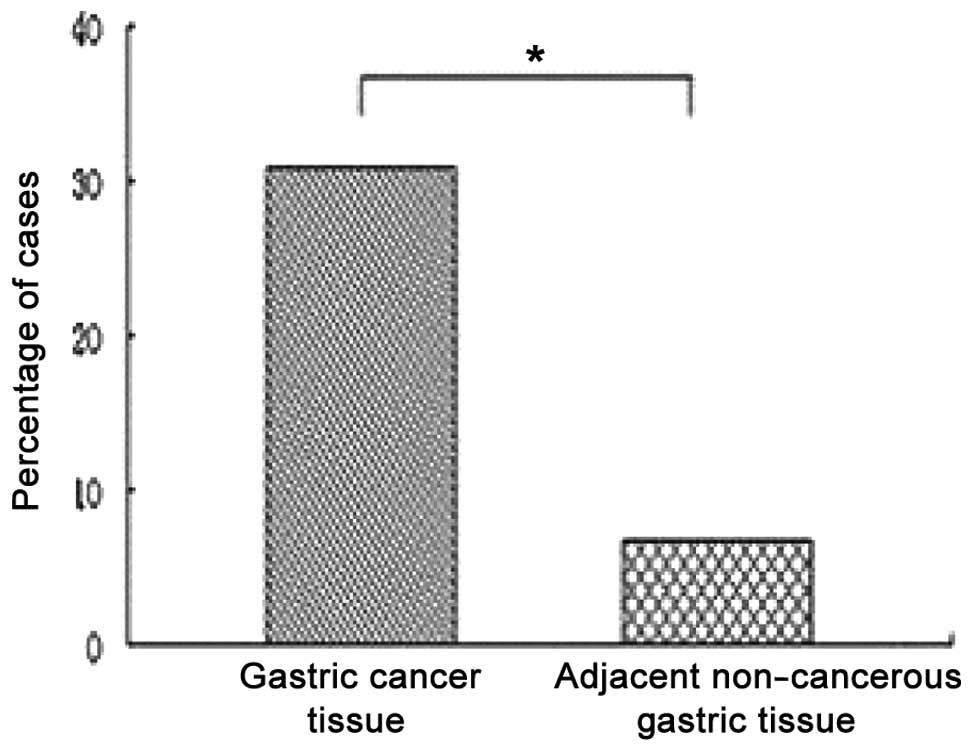Role of the CacyBP/SIP protein in gastric cancer
- Authors:
- Published online on: March 20, 2015 https://doi.org/10.3892/ol.2015.3059
- Pages: 2031-2035
-
Copyright: © Zhai et al. This is an open access article distributed under the terms of Creative Commons Attribution License.
Metrics:
Total
Views: 0 (Spandidos Publications: | PMC Statistics:
)
Total PDF Downloads: 0 (Spandidos Publications: | PMC Statistics:
)
Abstract
Various reports indicate that calcyclin binding protein/Siah‑1‑interacting protein (CacyBP/SIP) is an important protein in tumorigenesis, but whether CacyBP/SIP promotes or suppresses cancer may depend on the cell type. In order to investigate whether CacyBP/SIP is significant in gastric cancerous tumorigenesis, the present study used immunohistochemistry to analyze 181 gastric cancer tissue samples, as well as 181 healthy tissue samples from the same gastric cancer patients. The immunohistochemical results were compared against patient data and pathological analysis of the tissue slices, including gender, age, degree of tumor differentiation and tumor, node, metastasis (TNM) stage. In addition, the level of CacyBP/SIP expression was detected in three frozen tissue samples of gastric adenocarcinoma using western blot analysis. Of the 181 cases analyzed in the present study, 80 cases were identified as non‑metastatic gastric cancer and 101 cases were identified as gastric cancer that had metastasized to the lymph nodes. Tissue biopsies from the two sets of patients were examined using immunohistochemistry to identify the level of CacyBP/SIP expression in metastatic and primary gastric cancer tissues. Statistical analyses were performed on all data. The immunohistochemical analysis revealed that CacyBP/SIP was expressed in 31% (56/181) of gastric adenocarcinoma tissue samples and 7% (12/181) of adjacent non‑cancerous gastric tissues (P<0.05). Furthermore, the expression levels of CacyBP/SIP were higher in cancerous tissue compared with the adjacent non‑cancerous gastric tissue using western blotting. No association was identified between CacyBP/SIP expression and patient age (P=0.975), gender (P=0.185), degree of tumor differentiation (P=0.076) or TNM stage (P=0.979). Among the 101 patients with metastatic gastric cancer, CacyBP/SIP was expressed at primary sites in 31% (31/101) of cases and at metastatic sites in 26% (26/101) of cases (P=0.434). However, among the 80 patients with non‑metastatic gastric cancer, CacyBP/SIP was expressed at the tumor site in 34% (27/80) of cases, which was not significantly different from the 31% (25/80) of cases in the metastatic group (P=0.662). These findings indicate that CacyBP/SIP expression is not a marker of gastric cancer or metastatic gastric cancer, nor does it appear to correlate with the clinicopathological features of gastric cancer.













